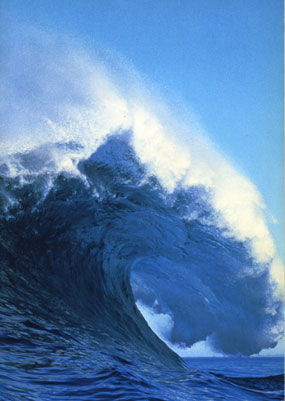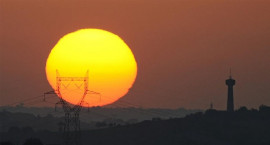
The coastline extending from Karachi to the Makran region of Balochistan face threat of earthquakes and tsunamis, said Pakistan Meteorological Department (PMD) Director General Muhammad Riaz on Monday.
Sesimic activity in Karachi and Makran Subduction Zone could cause tsunami at any time, he said at a media awareness workshop on Early Warning System for Hydro-meteorological Hazards was organised by the PMD at a local hotel in the city.
According to PMD Tsunami Early Warning Center, four earthquakes of different magnitude were recorded in Karachi during the year 2021. Apart from the regional level, Pakistan is also at risk of distance tsunamis caused by earthquakes of other countries in the region.
The workshop was attended by Chief Meteorologist Karachi Sardar Sarfraz, Additional Commissioner Karachi Jawad Muzaffar and UNDP representatives.
Sarfraz briefed about hurricanes, tsunamis, monsoon rains and PM’s forecasting system and installation of new equipment including doppler radar.
Talking to the workshop, Riaz Ahmed said that the way in which climate change is taking place, awareness through media is quite essential. Tsunami activity is being reported due to Karachi and Makran Subduction Zones.
The tsunami could at any time affect the coastal areas of Karachi and Balochistan with high waves. He said it could take up to 10 years for a tsunami to occur as per the past precedent, but it was so uncertain that the tsunami could come even after one day. Broadcasting of such programs through media is essential to provide awareness to the people living near the coastal areas.
Read More: PMD forecasts high temperatures in Karachi for next two days
According to Riaz, with early warning, the community’s self-response can greatly reduce the risks. Karachi’s early warning system has been heavily upgraded with the installation of new equipment.
On this occasion, Meteorologist Tsunami Early Warning Center Tariq Ibrahim said that four earthquakes of different magnitude have been recorded in Karachi city during the year 2021.
A magnitude 2.9 earthquake was reported in Karachi on January 16. A magnitude 3.1 earthquake shook the region in August, followed by a magnitude 4.1 earthquake on December 8 and a magnitude 3.3 earthquake on December 12.
The epicenter of the four earthquakes in Karachi was Kirthar, Gadap and Thana Bola Khan. He said that three major earthquakes have been reported in Pakistan in the last 100 years. The magnitude of the earthquakes recorded in Pakistan ranged from 7 to 7.9.
An earthquake in Balochistan in 2013 caused an island to rise in the sea. The causes of tsunamis in the sea include earthquakes, landslides, volcanoes, environmental tremors and the fall of meteors into the sea. The average duration of major earthquakes in the region of Pakistan is about 33 years.
In the 200-year history of the region, there have been earthquakes in Kashmir, Quetta, Hunza, Ziarat and Awaran regions. He added that most of the earthquakes in the world are reported in Pamir and Mount Hindu Kush. Pakistan is also at risk of distance tsunami along with local tsunami.
According to UNDP Representative Adnan Iqbal, UNDP has installed Tsunami Early Warning Systems at five locations in Sindh and Balochistan, which will alert people before any tsunami or storm strikes.
The siren will sound 15 to 20 minutes before the tsunami strikes, after which people will be evacuated immediately. He said that the danger of tsunami on the coast was increasing day by day. There is an urgent need to make people aware of this.
Published in The Express Tribune, December 30th, 2021.






1732861143-0/Untitled-design-(73)1732861143-0-270x192.webp)














COMMENTS (1)
Comments are moderated and generally will be posted if they are on-topic and not abusive.
For more information, please see our Comments FAQ